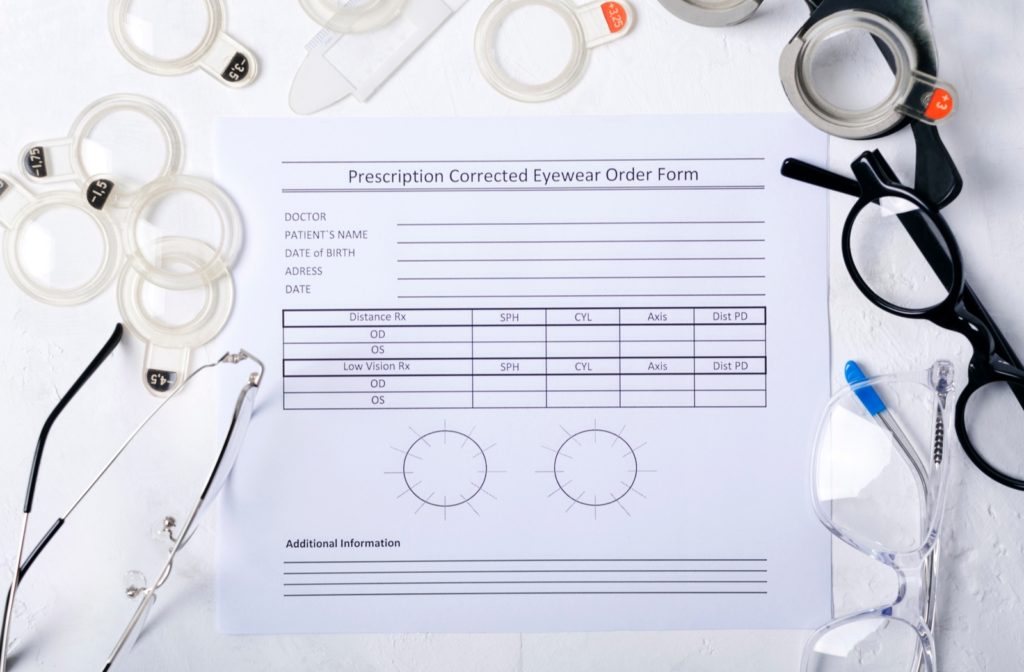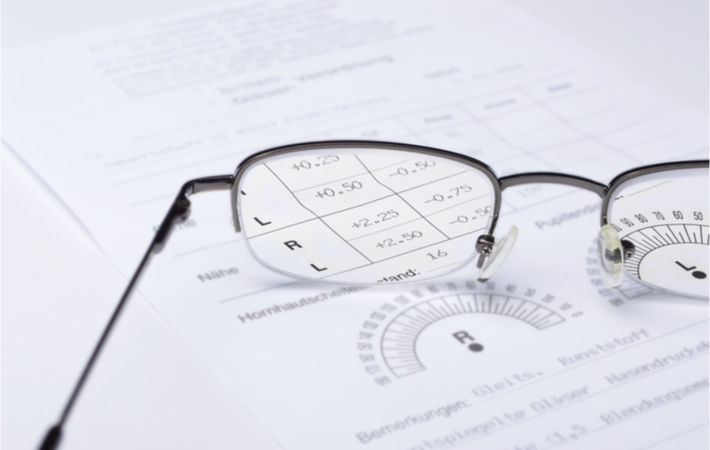Deciphering Your Glasses
You’ve just had an eye exam and received an updated glasses prescription. After looking at your prescription, you might be puzzled by the abbreviations and measurements. For example, what does OS or OD mean? What does a minus or plus sign indicate?
Understanding how to read your prescription is easier than it looks at first glance. Once you know the basics, you can feel more confident the next time you discuss your new frames and lenses with your optician.
Visual Acuity
Visual acuity is a measurement of focusing ability at a set distance. In the US, 20/20 is considered normal visual acuity. The measurement is based on what an average person can see clearly at 20 feet.
Suppose you have 20/40 vision. In that case, you must be 20 feet away to see an object the average person can see 40 feet away. Visual acuity indicates visual clarity, but it doesn’t measure other crucial vision skills, such as depth perception, eye coordination, or peripheral (side) vision.
Vision tests can measure visual acuity, but a comprehensive eye exam evaluates eye health and function. Although visual acuity informs your lens prescription, it’s not the number you’ll need to know to read your glasses prescription. Instead, you’ll need to know about diopters.
Lens Power
Lens power, sometimes written as the sphere (SPH) measurement on your prescription, is measured in diopters (D). The prescription for lens power corrects refractive errors, including myopia (nearsightedness) or hyperopia (farsightedness).
The prescription number is preceded by a minus sign (-) or a plus sign (+).
- A minus sign indicates the lens power for correcting myopia. Myopia causes blurry distance vision.
- A positive sign (or no sign) indicates the lens power corrects hyperopia. Hyperopia causes blurry near vision.
Prescription numbers start at zero. After zero, prescription numbers increase by quarters (such as 0.25, 0.50, and 0.75). A lower number indicates a lower lens power or weaker prescription. A higher number means a stronger lens power.
Your prescription number can tell you if you have a mild, moderate, or severe refractive error.
The lens power range for myopia includes:
- Mild: -0.25 to -2.00
- Moderate: -2.25 to -5.00
- Severe: -5.00 or lower
The lens power range for hyperopia includes:
- Mild: +0.25 to +2.00
- Moderate: +2.25 to +5.00
- Severe: +5.00 or greater

OD and OS
Recognizing diopter measurements can tell you how strong your prescription is. Still, it doesn’t tell you which eye the prescription is for. Instead, you’ll look for the abbreviations OD and OS. Oculus dexter (OD) indicates your right eye, and oculus sinister (OS) means your left eye. Additionally, you might see OU or oculus uterque, the Latin term for both eyes.
The Latin terms OD and OS are traditional, but some eye doctors may choose the simpler RE for the right eye and LE for the left eye.
You may be surprised to discover your right eye and left eye require different lens powers. Like having a dominant hand, you also have a dominant eye. Your dominant eye is preferred for visual input but may not have better visual acuity.
Typically, the difference is minimal. However, a significant difference can indicate an eye problem, such as a cataract or amblyopia (lazy eye).
Astigmatism
While there are many reasons you may have different lens powers for each eye, a common cause is astigmatism. When the cornea or lens is irregularly shaped, more football-like than round, it changes how light enters the eye. Astigmatism affects 1 in 3 people and frequently occurs alongside myopia or hyperopia.
When you have astigmatism, 2 measurements can appear on your prescription: the cylinder and axis number.
The cylinder (C or CYL) indicates the lens power required to correct astigmatism. It’s measured in diopters. Similar to a spherical diopter measurement, it can be negative or positive, with higher numbers indicating a higher level of astigmatism.
The axis number measures the orientation or position of your astigmatism. The axis range is 0–180 degrees. For example, the horizontal (lengthwise) eye meridian is 180 degrees, and 90 degrees is the vertical meridian.
Here are 2 examples:
- OD -3.25 +0.50 x 120: The patient’s prescription indicates 3.25 diopters of myopia with 0.50 diopters of astigmatism and an axis of 120 degrees for the right eye.
- LE +2.25 +1.25 x 90: Their prescription is for the left eye, indicating 2.25 diopters of hyperopia with 1.25 diopters of astigmatism and an axis of 90 degrees.
Add
The add column on your prescription is reserved for additional lens power for multifocal lenses. Patients with multiple vision problems may choose to combine lens powers into a singular lens instead of switching between 2 pairs of glasses.
For example, a person with presbyopia and myopia may benefit from bifocal glasses. The lower half of the lens features a lens power for presbyopia (close vision) and an upper half for myopia (distance vision).
The add is similar to the sphere measurement, written in diopters with a minus (-) or plus (+) sign preceding the number. Not all patients require a multifocal lens, so you may also see a blank add column.
Discussing Your Prescription
Knowing how to read your prescription gives you more freedom to choose an optician. However, it’s also crucial to understand your eye health. Your prescription provides the basic results of your eye exam, but it’s not the whole story. Discussing your prescription and your eye health can help protect your vision.
Book an appointment with Signature Eye Care in Lincoln when it’s time to update your prescription. We’re dedicated to personalized, high-quality care. So you can feel confident that your eye health and vision are a priority. Ask our opticians about your prescription today!



